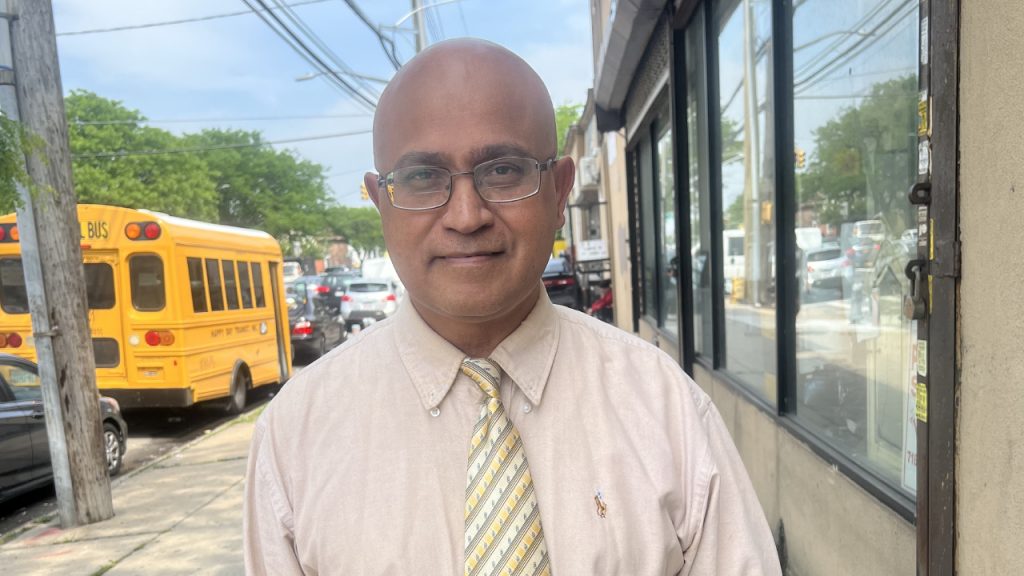Historically in America, minority communities (Blacks in particular) have been gerrymandered out of elected seats – Whites, who were/are in charge of drawing boundaries of constituencies, manipulate the process to reduce or prevent representation of African Americans or other minorities of their members who get elected to legislatures. Contemporary, those who were gerrymandered by Whites in the past are now involved in the process of gerrymandering Indians (Guyanese, Trinis and South Asians), denying them any opportunity to elect one of their own to New York City Council or State Legislature or Congress.
There are hundreds of thousands of people of Indian and other South Asian descent (Guyanese, Trinis, Panjabis, Bangladeshis, among others) in New York. The bulk are concentrated in Queens county and more specifically in the greater Richmond Hill section (in southern Queens) also nicknamed “Little Guyana” with an official sign on Lefferts Blvd and Liberty Ave. (Little Trinidad sign for 121 Street and Liberty Ave is in the making). Numbering over 250,000 in the greater Richmond Hill, the large “Indo” community has been gerrymandered out of political representation (not a seat in the City Council or the two chambers of the State legislature). Instead of drawing boundaries to include all the South Asians in one district, the area has been divided up into five districts for the New York City Council, Three four NY State Assembly, three for NY Senate, and three for US House of Representatives.
After every census conducted at every new decade, constituencies are redrawn based on shift in population to empower ethnic communities or neighborhoods, keeping them united in a district. Historically, people of same ethnicity tend to cluster in the USA, particularly in urban areas, creating segregated or ethnic neighborhoods – Little Italy, Little Ireland, Little Poland, Little Ukraine, Little Jamaica, Little Guyana, Little Trinidad, etc., allowing them to elect a member of their group to office. Members of ethnic communities compete against each other in the primary election process to win the nomination of their party for the general election. The county of Queens attracts over half a million people of South Asian descent (Guyanese, Trinis, etc.). The greater Richmond Hill/Ozone area, a sub-section of Queens, is heavily concentrated with people of South Asian descent, but the community has never been empowered to elect one of their own to office. (Jenifer Rajkumar was elected to the State Assembly in 2020 but was elected in a constituency where South Asians make up a few percent of the population and was not elected on the voting power of South Asians although they heavily funded the campaign). Court rulings mandate that boundary lines of constituencies be redrawn with an effort to keep neighbourhoods together, and to create contiguous districts of residents and communities with “common concerns and interests.” Greater Richmond Hill was divided by Redistricting Commissions into four city council districts (three African Americans and one White) and several State legislative seats (three Blacks, three Whites, one Asian) and three Congressional seats (one Hispanic, one White, and one Black) after the 2000 census, making it almost impossible for a South Asian or Caribbean person to get elected in any seat. The lines of constituencies were redrawn as mandated by the 2010 US Census and instruction of the court. The South Asian community remained dis-empowered. After the 2020 census, the boundaries of the City Council and State community were drawn to further prevent a member of South Asian community from winning a primary of a political party. The voting power of South Asians in Queens were diluted into six Assembly districts and multiple Senate and NY City districts. Only one person can be elected from a constituency or district.
The redrawing of boundaries, according to court rulings, are supposed to keep communities united. But the opposite has happened regarding election to legislatures. South Asian representation has been prevented although promises were made by elected politicians in 2010 to create a “South Asian” seat to the City Council and in the State legislature. The City lawmakers have divided the area where Indian Guyanese, Trinis, and South Asians are concentrated have been gerrymandered into five districts. The State and Congressional boundaries after the 2020 census also make it impossible for a person of South Asian descent to get elected to those legislatures.
Community advocates at various public hearings have made a strong case for a NY City Council seat in the greater Richmond Hill area. But the Commission to redraw boundaries turned a deaf ear on their appeals presented by Albert Baldeo, Vishnu Mahadeo, and others. A seat is approximately 140,000 in population size in the city. Jews, Irish, Italians, Blacks or Africans, and Hispanics, and Asians have had seats drawn up for their communities. With over 250,000 in greater Richmond Hill area, Guyanese, Trinis, and South Asians should get a minimum two seats and another two in other sections of Queens. Instead, they get none.
The new districts have gerrymandered the voting rights of Guyanese, Trinis, and South Asians not different from what was done historically to African Americans and other minorities. The voting power of the Guyanese, Trinidadian, and South Asian communities have been diluted to empower other communities. They will not be able to elect someone who looks like them to represent them in Congress, NY State, and City Council. Community leaders should expose this racism being unleashed on the community in order to embarrass minority lawmakers who fail to support the creation of a South Asian/Caribbean district in Queens. Community leaders should also challenge the creation of new districts in court.
